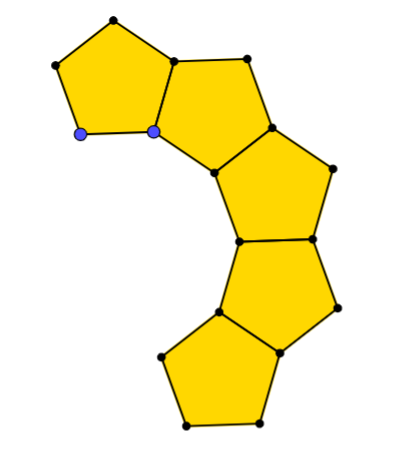Or search by topic
Number and algebra
Geometry and measure
Probability and statistics
Working mathematically
Advanced mathematics
For younger learners
Polygon Rings



Here is a pattern made of regular pentagons:

If the pattern continued, do you think it will form a complete loop or will the pentagons overlap?
Try it using the Tessellation Interactivity below.
If you've never used the interactivity before, there are some instructions and a video.
Once you've had a chance to explore, here are some questions you might like to consider.
How many pentagons form a ring?
How many decagons would form a ring?
Why do they fit together so neatly without overlapping or leaving a gap?
What about other polygons?
Can you always make a ring?
Is there a way to predict how many polygons you need to form a ring?
With thanks to Don Steward, whose idea inspired this problem.
You may also like
Arclets Explained
This article gives an wonderful insight into students working on the Arclets problem that first appeared in the Sept 2002 edition of the NRICH website.
Bow Tie
Show how this pentagonal tile can be used to tile the plane and describe the transformations which map this pentagon to its images in the tiling.

